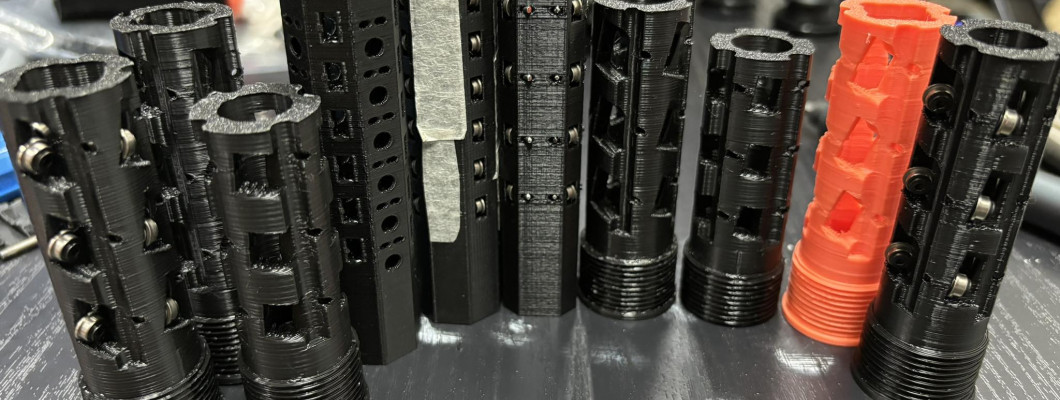
There are so many BCARs in the market right now but it seems hard to find one that work for your blaster. Some are FPS rated, some are just degree, but you just don’t know which one is better for your blaster unless you buy all of them to try. Well, here is our attempt in solving this mystery! By well...just doing a lot of testing with the help of science and technology.
Before we begin building our BCAR, we went through forums, Reddit and Youtube to understand more about the concept of "rifling". There are some that claims that rifling doesn’t work on Nerf darts, that you should use a heavy tip plus well glued dart. There are even advance science and maths that commoners like us, just simply could not fathom. There are videos stating which degree of BCAR and how much spin we need to induce onto the dart for optimal result. There are people proclaiming BCAR works up to 250FPS and furthermore a StringCAR will performs better. But wait, don't both B/SCAR spin the darts, how and why are they different? And does rifling actually works?
Before we attempt to answer that, we have to understand this very problem we are dealing with. First, the muzzle blast. The compressed air behinds the dart is being forced to gush out and probably travels faster than the dart itself. This has the potential to destabilize the dart just as it exit the barrel. Secondly, a problem unique to the darts' foam body to be specific, there is a 2nd blast coming from the hollow space within the foam. We are not dealing with 1, but actually 2 blasts, which make this potentially more complex.
Just imagine those science experiment soda rocket (google or youtube it) where you pump a lot of air, and the soda bottle shoot up into the air. Without fins, the bottle will fly everywhere. With the fins, the soda rocket become much more stabilize. Since we can’t add fins to the darts, what we did was add rifling to the dart. Most arguments have been surrounding center of mass, and rifling doesn’t exactly aided on that, but we think rifling does helps in 2 different aspects. First, it stabilizes the dart from the blast within the foam, and second, it alleviate the imperfection of the darts. Most of us use mass produced or used darts and these darts definitely aren't perfect. Rifling hide these by spinning around, countering any flaws that might direct the dart to somewhere else than your target. Wild stuffs huh?
Well at the end of the day, these are just our theories, and we have no real way to prove it. Feel free to write in and let us know what you think.
Since we aren’t going to sit on just theories, we fired up our CAD tool and our 3D printer to test all of these out, in a non-scientific way (we don’t really understand adv math/rocket science, remember?). First question to answer, does rifling actually works? This is a decade old problem which of course we aren’t the smartest people around to solve it, so we just started by designing a 0 degree BCAR, to see if, without inducing any spin to the dart, can a few bearings "centering" the darts alone will actually improve the accuracy. We mounted that BCAR to low 130-140FPS blaster and up to high 250-280FPS blaster. Unsurprisingly, all we got is darts flying everywhere, accuracy practically ZERO. Then we tried with a more open designed, intended to direct the blasts away from the BCAR but still no luck. After a few rounds of testing, we raised the white flag and just gave up on this 0 degree BCAR design because there isn’t a way to make it work.
So okay, we established that rifling is indeed needed. Next, why SCAR is better than BCAR at high FPS? Again, theory time! At higher FPS range, there are significant larger muzzle blast where air will be traveling faster. We aren’t referring to the amount of air being blasted (as that’s a topic with over/underbarrel) instead, we are referring to the speed of the air coming out of the barrel. If you look down on a SCAR, say something made of 4 strings, and you can observe a square pattern in a round barrel. We think this actually allow air to escape around the darts, effectively reducing the muzzle blast. But can’t we port the BCAR? A big rush air like that doesn’t like to travel elsewhere other than the straight direction.
For example, put your palm 1 foot away from your mouth and blow it. It will be still fairly strong, but tapered, imagine a shotgun firing a birdshot round, it spreads in a cone shape. That is just your mouth blowing air at 1 foot away, whereby a blaster's muzzle is significantly smaller and have much higher and concentrated output. In this CFD (Computational Fluid Dynamics), we can see the difference of ported and non-ported bearing muzzle design. Please note that this is not a correct representation of what actually happens (because we have dart and also bearing which will change the airflow), but good enough to have an idea.

Figure 1: Non ported BCAR (left) VS aerodynamically ported BCAR (right)
Adding porting is better but the air blast is still very much focused at the exit. Bear in mind, this is ported with our aerodynamic porting which is designed to help channel air away more efficiently. With these aerodynamic porting in our testing, we actually achieve better result than the non-ported one.
But that is still not enough, we need to channel as much air away as possible and thanks to what we learnt from SCAR, we have extra air vents, that channel air around the dart, allowing air to escape way to the muzzle before the dart. This is the CFD of the one without and with air vent.

Figure 2: Aerodynamically ported BCAR (left), Aerodynamically ported + air vented BCAR (right)
Together, our BCAR are able to channel muzzle blast outwards more efficiently while maintaining a smaller profile which allows us to use different silencer/diffuser/accessories over it.
We tested many BCAR in varying degree and finally settled on these 2 angles rated for different FPS. We will be rating our BCAR using FPS because that’s how we felt it should be rated. We further tested the BCAR using blaster at the rated FPS range and achieve satisfactory result from it.
The BCAR200 is rated for 200FPS. From our testing, it works well up to 250FPS or even higher, perhaps thanks to its efficient muzzle blast dispersion.
The BCAR300, as its name suggest, is rated for 300FPS. However, we don’t have anything more than that in our arsenal to test but we are happy to get some feedback from y'all! BCAR300 will have more rifling added to it and from our testing you will need at least 250FPS to utilize it properly, anything below will create a negative effect (dart goes whirlwind/tornado).
In conclusion, the BCAR200 is designed to be more of a fast or hip-firing kind of BCAR while the BCAR300 is designed to be more of a precision scope sniping type.
You can purchase the BCAR in our store now.
BCAR200: https://www.monkeemods.com/nerf/monkee-mods-bcar200.html
BCAR300: https://www.monkeemods.com/nerf/monkee-mods-bcar300.html


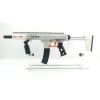
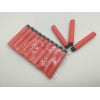
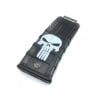
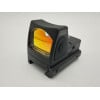
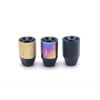
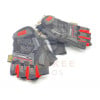
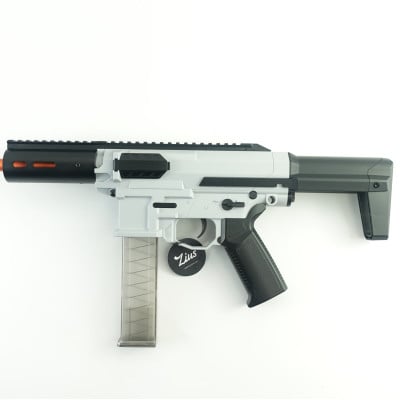
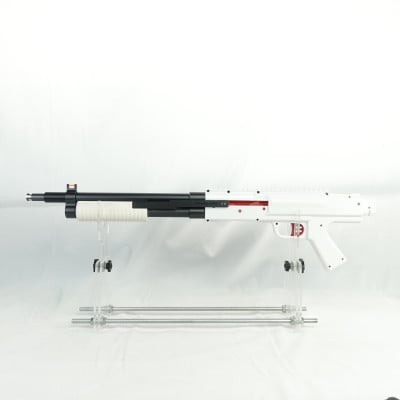
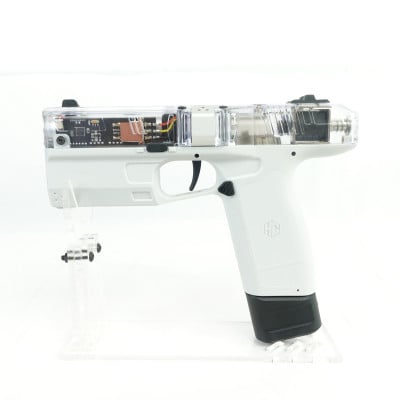

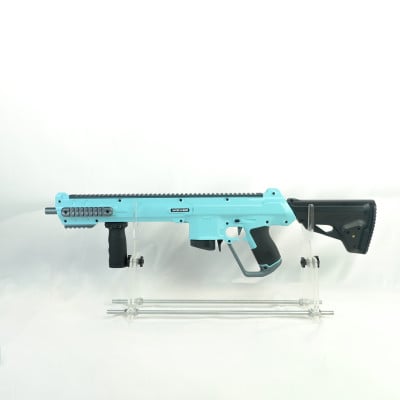
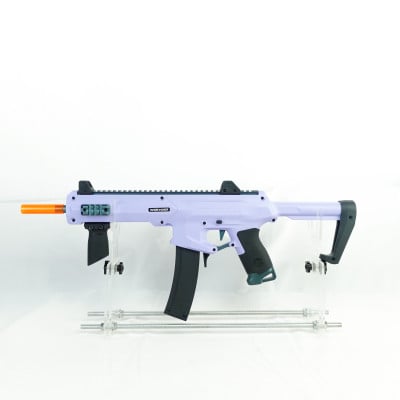
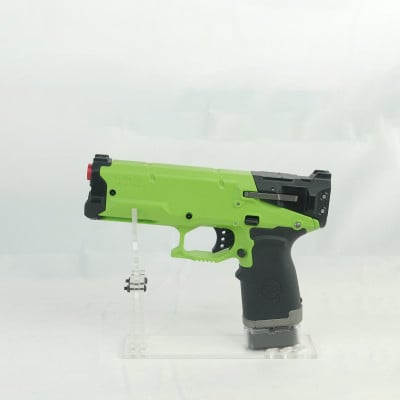
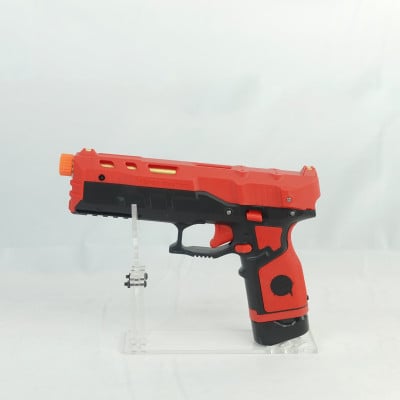
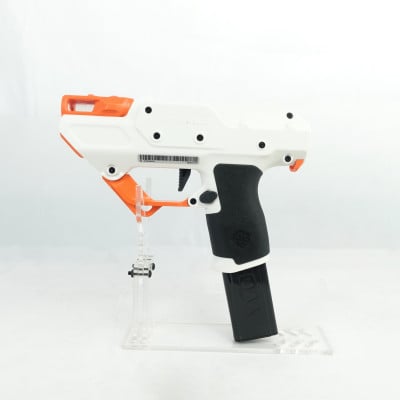

Leave a Comment